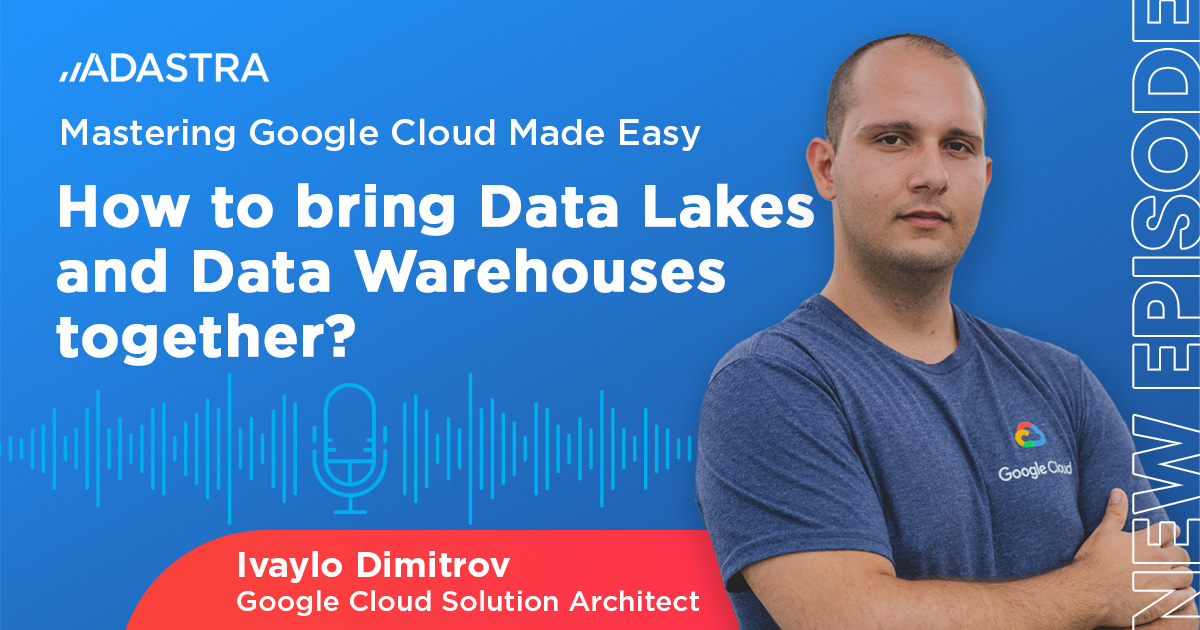Insights
Multi-Cloud and Hybrid Data Engineering Solutions
January 10, 2021
With organizations recognizing the immense potential of the Cloud and the role it can play in digital transformation, there has been a surge in cloud adoption over the past few years. As a premier data and data management solutions provider, Zelusit supports numerous clients across industries in planning and implementing their data journey through Cloud strategies.
Some of the trends we have been noticing recently is the mixing of legacy and emerging tools, and the increase in multi-cloud and hybrid solutions. This change can be attributed to the increasing maturity and understanding of organizations about Cloud and Cloud technologies, which has prompted them to tailor their environments to best suit the needs of various business functions and for solving complex use cases.
This article aims to not only address pertinent questions about what multi-cloud and hybrid solutions are and who could benefit from them, but also highlight some data engineering solutions that work across cloud platforms, enabling organizations to adopt a multi-cloud strategy.
What is a Multi-Cloud Solution? How does it differ from a Hybrid Solution?
Multi-Cloud, as the name suggests, is the distribution of enterprise data assets and applications across multiple cloud providers instead of relying on a single one. Since each cloud provider has its own strengths and unique advantages, a multi-cloud strategy can allow an organization to make the most of the benefits offered by different providers. In some cases, different divisions or lines of business (LoBs) within an organization may want to choose a different cloud provider, based on their specific requirements. In other cases, an organization may opt for different cloud platforms for various applications and solutions.
A hybrid solution, on the other hand, is one where some applications in an organization migrate to the cloud whereas others are still on-premise.
Needless to say, in either case, it is imperative that the applications and solutions, regardless of where they are housed, can communicate, exchange data, and collaborate, to ensure seamless operations.
Drivers of Multi-Cloud and Hybrid Solutions
Selecting a cloud provider is never an easy decision to make, especially since each provider has its own set of advantages and areas of specializations. An organization must take all of these aspects into account, along with their specific business needs and requirements.
Sticking with a single cloud provider also comes with the risk of ‘vendor lock-in’, which is the commonly used term for becoming overly dependent on a particular cloud vendor and being unable to move to a different one due to cost implications or technical incompatibility. This dreaded phenomenon is akin to putting too much power in the hands of a single cloud provider and therefore, becoming prone to risks arising from sudden price increases or technology changes. Some specialized teams may also have a strong preference for a specific toolset, for instance, statisticians might want to use SAS Cloud while the rest of the organization uses on of the Big 3 cloud platforms.
Organizations may opt for a hybrid solution in cases where a piece of their technology is not cloud-ready, or when regulatory or legislative restrictions (e.g., data localization laws) are in play, such as in the case of public sector organizations.
Both multi-cloud and hybrid solutions allow organizations the flexibility to pick and choose the services they are looking for, at a price point they are comfortable with, without putting all their proverbial eggs in one basket.
Limitations of Multi-Cloud and Hybrid Solutions
Despite the inherent benefits of a multi-cloud or hybrid solution, the seamless communication and collaboration between different platforms can often be a challenge, especially when data sharing is required between applications located in different places. For organizations using multiple cloud providers, data often needs to be copied or moved from one cloud to another, which comes with a network egress cost attached. Moreover, despite the advancements that have been made in cloud solutions, cross-cloud operation often introduces additional latency, which can have an adverse impact on application performance. This can be a limitation for organizations that use data across different clouds for real-time analytics, AI, machine learning or other advanced use cases.
Reference data and Master data management across multiple platforms can pose additional challenges for the successful implementation of a hybrid or multi-cloud solution. In addition, exposing data from one cloud to another may give rise to security concerns/constraints, and may require extra effort when it comes to managing encryption, setting up identity and access controls, etc.
How to Build a Successful Multi-Cloud Solution?
The multi-cloud solution has some distinct advantages, and while some limitations do exist, by properly and strategically planning your cloud journey, it is possible to break the barriers that exist between clouds and leverage the benefits of each offering. This section provides an overview into the considerations and approaches for a successful multi-cloud implementation.
Prerequisites: Cloud Readiness Assessment & Analysis
The first step in Zelusit’s approach for multi-cloud implementation is an assessment of prerequisite factors. During this step, we seek to answer basic questions that will help determine the organization’s cloud migration readiness. These include:
- Where is the data presently stored? Does the organization already have a presence in one cloud?
- Does the organization want to move to another cloud? Why? (E.g., better tools, faster time to value, low cost, etc.)
- Will the new cloud fulfill all the needs of the organization? (E.g., does it offer specific analytical capabilities that may be needed? Does it have a reasonable network egress cost?)
- What are the potential constraints or challenges that might be encountered? (E.g., cost or performance implications)
- What data does the organization want to move to the new cloud platform? (E.g., data pertaining to a particular domain or a specific application)
- What are the possible implications of moving this data from one cloud to another? (E.g., the datasets might be needed by applications on both clouds, etc.)
The assessment will look across the business, technologies, people, and processes, collect the relevant knowledge for each domain, analyze the findings, and evaluate the overall organizational readiness for the move, as well as identify, assess, and classify the applications that are candidates for migration to the cloud/second cloud platform. We recommend analyzing the organization’s business case for a migration to ensure that it aligns with the overall digital transformation strategy and takes a holistic view of the risks and benefits.
This step will also ensure that no significant challenges arise from the moving of business-critical applications from one cloud to another (or from on-prem to cloud), or that the risks are known in advance and a mitigation plan is in place.
Architecture: Designing and Planning
Once the initial assessment is completed, the next step is to carefully plan and design the target architecture. This involves selecting appropriate tools and redesigning/refactoring the technology stack to maximize efficiency and business impact. Zelusit typically reviews the architecture closely in line with the business, in order to create a holistic system capability requirements document. Each application that is a candidate for migration must be assessed to see if it needs refactoring, repurchasing, redesigning, rehosting, or in case it is approaching its end-of-life, needs to be retired or replaced.
We typically help organizations align the migrating applications with the selected cloud platform and provide a fully architected technology framework. This step should also involve creating a detailed technology interdependency analysis and adoption plan. Other considerations to keep in mind during this stage are planning for governance and security requirements, modification of policies and standards, and ensuring that the organization has adequate skilled resources to implement and maintain the solution.
Migration Scoping and Planning
Before the execution can start, the precise migration scope needs to be determined and a migration plan must be created. While the Architecture phase provides a migration/target solution blueprint, the output of the Migration Scoping and Planning phase is a detailed migration scope and migration plan.
This detailed document includes specifics about the location, type, status, and amount of data and the applications that need to be migrated. A migration schedule, including milestones and a reporting track needs to be created. Issues pertaining to data quality and sensitive data should also be reviewed and measures should be planned to address them.
The performance of both the destination environment and the source platform needs to be tested and monitored to ensure proper configuration. The size and scale of your chosen cloud storage component should also be estimated, keeping in mind room for growth. Finally, the migration plan should also clearly allocate responsibilities for data ownership, tasks within the migration project, and involve other stakeholders that may be needed (such as compliance, security, etc.)
Migration: Execution
The final phase of the process involves the execution of the migration plan. Migration must be executed in such a way as to allow the continuation of the daily operations with minimal or no disruption. Zelusit has extensive expertise in planning and executing smooth migrations to the cloud/clouds, and in our experience, the most successful approach here is a gradual one.
This starts with a proof of value which involves selecting one relatively simple component and moving it to the cloud, and then, after assessing its success, gradually migrating additional components. The gradual approach is cheaper, easier, and less risky. In contrast, if an organization were to move the entirety of its business processes in one go, it would not only be an expensive endeavor, but would also involve a very high risk of some critical components failing in the process.
Zelusit recommends the use of carefully chosen migration tools, rather than manual migration, as they expedite the process, and allow for migration monitoring and a migration restart, if needed. Upon completion of each step of the migration, the organization should conduct post-migration validation to ensure that the overall system is working smoothly. At this stage, it is also imperative to evaluate the security and access policies, the platform’s ability to monitor and log operations, and the audit and alerting functionalities.
Multi-Cloud Technologies in Data Engineering
As a leading data management organization, Zelusit has expertise in all of the top cloud platforms, and we have successfully been helping our clients maximize the value of their data by optimally selecting and implementing solutions that work best for them. Among our core capabilities is our expertise in Data Engineering, i.e., the integration of data across environments, platforms, and technologies.
With an increasing number of organizations transitioning to a multi-cloud or hybrid model, many data engineering solutions, such as cloud migrations, migration of data from legacy systems to systems backed by emerging technologies, architecting of batch and real-time data integration solutions, integration of unstructured data, data cleansing, and feature engineering have gained importance.
While there are many data engineering tools available in the market, not all of them work across clouds, and for organizations that are adopting or planning to adopt a multi-cloud solution, it is important to choose technologies that will support their needs. This section provides examples of data engineering technologies that are usable across clouds:
Databricks
Databricks is a powerful, Spark-based, data integration and analytics framework used to integrate data across systems and analyze it. It is currently available on Microsoft Azure and Amazon Web Services (AWS). While it is not available on-premise, organizations using Apache Spark on-prem can easily migrate to Databricks when they move to the cloud.
Databricks has a strong focus on Artificial Intelligence (AI) and Machine Learning (ML). Recently, Databricks launched its new SQL Analytics service, allowing users to perform BI and SQL workloads directly on the data lake. This “lakehouse” architecture, combines data warehousing performance with the economics of a data lake to offer customers a significantly improved price/performance ratio compared to traditional cloud data warehouses.
Snowflake
Snowflake is a cloud-agnostic solution for data warehousing, data lakes, data engineering, and data science. It allows for seamless data sharing and, with its data warehousing-as-a-service model, Snowflake eliminates the administration and management demands of traditional data warehouses and big data platforms.
Data Virtualization tools – Apache Presto and Denodo
Data virtualization tools provide access to data while hiding the complexity of technical aspects like its location, structure, or access language. Tools like Apache Presto and Denodo allow users to access data in different systems or clouds (such as in multi-cloud or hybrid solutions) and provide smart querying tools so users can access the data – regardless of where it is stored, or in what form – using simple SQL language. These tools are crucial for enterprise solutions where data is required for reporting, analytics, and operational purposes.
Besides the smart querying technologies, these tools have a centralized metadata layer and cache, and data access details are transparent to users.
These are only a few examples of the fast-growing cluster of tools and technologies that can work seamlessly across clouds to enable the adoption and implementation of a multi-cloud strategy.
How Zelusit Can Help You Adopt a Multi-Cloud/Hybrid Solution
Zelusit has 20+ years of expertise in the data and data management space, and we are a premier partner of all three of the top cloud providers. We understand that each organization’s requirements and expectations differ, when it comes to their data and cloud requirements, and we work closely with our clients to build a cloud strategy that aligns with their strategic objectives. Our experts have in-depth knowledge of both legacy and emerging solutions, and we have a proven track record of implementing successful migrations and multi-cloud/hybrid solutions for our clients.
Moreover, Zelusit has extensive experience in not only enabling cloud adoption but also ensuring that our clients can appropriately leverage the capabilities of various cloud platforms and overcome any barriers without disruption to their business. One of the most common challenges faced by organizations when it comes to multi-cloud or hybrid solutions is the seamless data exchange and communication between various applications, and our Data Engineering experts can help integrate data across all your environments, platforms, and technologies. In addition, Zelusit offers a full suite of data-related solutions, including data governance, AI & analytics, and managed services, so organizations can consistently get the most value out of their data.


